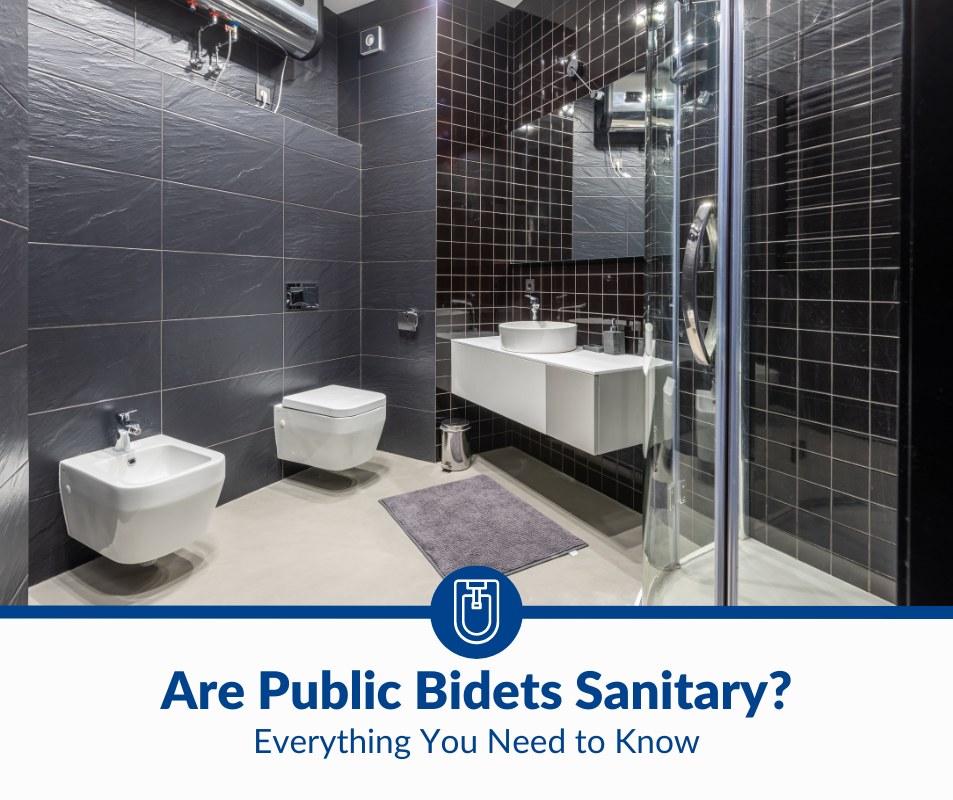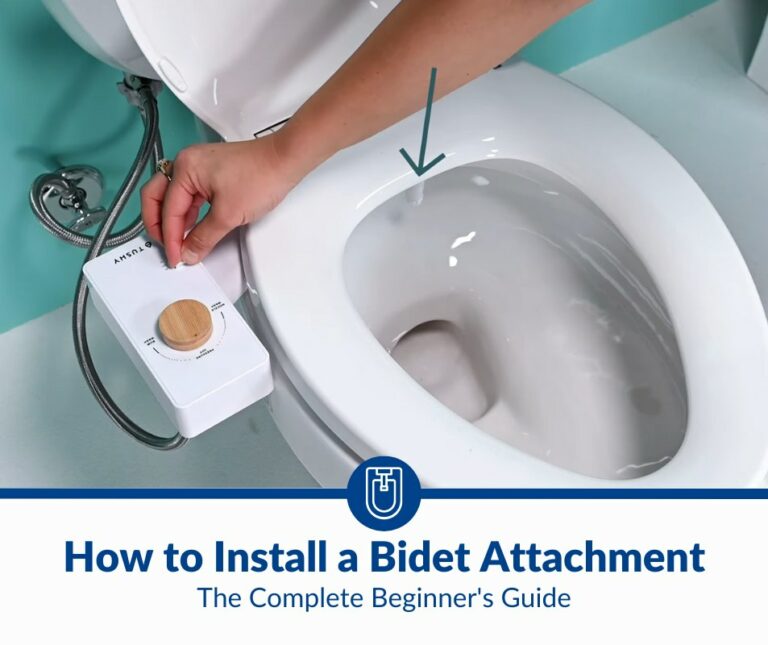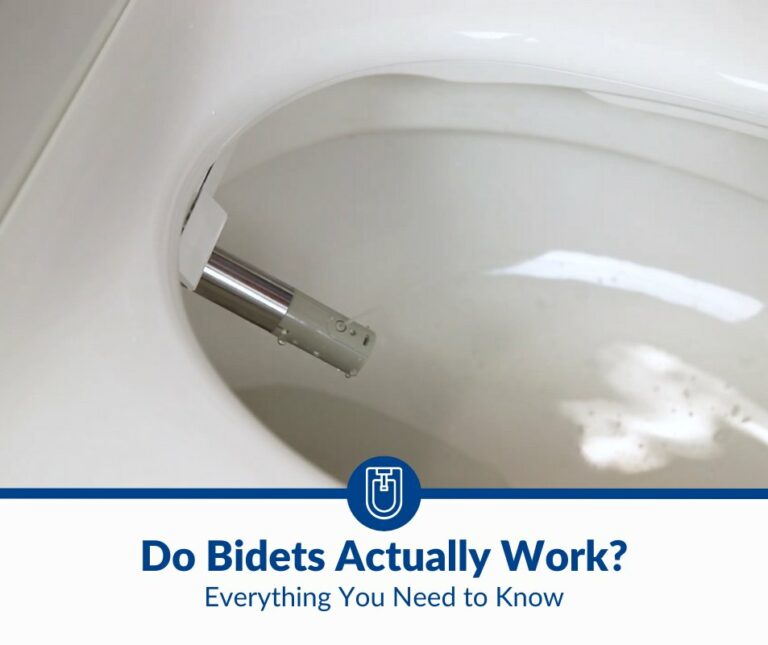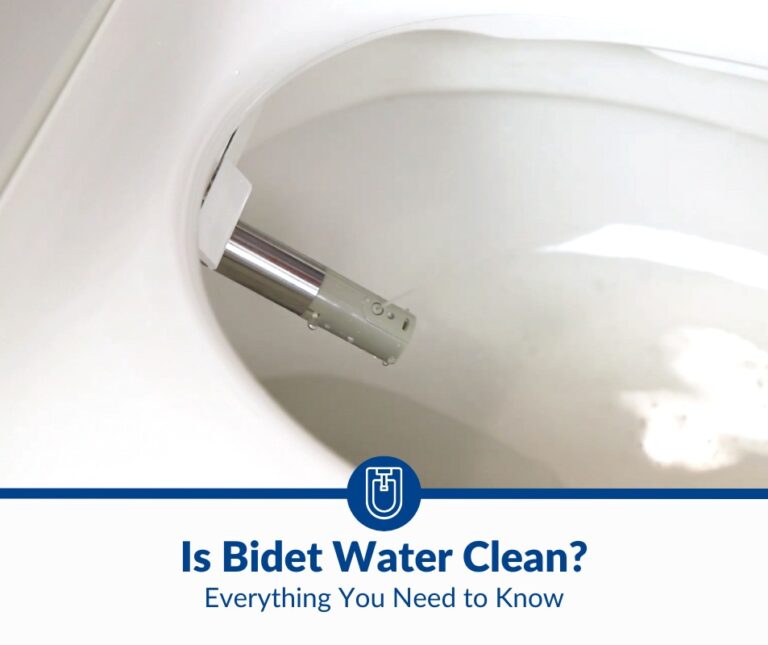Are Public Bidets Sanitary? Here’s What You Need to Know
Bidets are becoming increasingly popular, one of the many reasons more public restrooms are starting to use them. However, there have been concerns about the cleanliness of using public bidets. After all, bathrooms aren’t necessarily the cleanest places in most public areas.
Public bidets are sanitary if they’re maintained properly. The bidet should be cleaned after each use, which is highly unlikely in most public settings. However, you can disinfect the bidet with antibacterial solutions before using them. You can also inquire about the company’s cleaning policies.
Throughout this article, we’ll explain why you might want to avoid public bidets, whether or not they’re unsanitary, and how you can stay safe and clean while using them.
Why Shouldn’t You Use Public Bidets
You shouldn’t use public bidets because they can be covered in bacteria from other people. Furthermore, they’re exposed to splashing toilet water and many other dirty things that can cause numerous health problems. Never use a public bidet if it looks discolored, damaged, shifted, or otherwise imperfect.
Here’s an in-depth look at these reasons:
- Bacteria can grow rampantly on public bidets. They can get dirty much quicker than a traditional toilet due to the spraying mechanism. Almost all the water from the nozzle goes back into the bowl. A lot of that water coats the nozzle, which can spray on the next person who uses the bidet.
- Toilet water contamination can be a serious problem. A public bidet is only as clean as the toilet water it uses. Most bidets are connected to the same water source as the toilet, so dirty water can cause infections through bidets. Furthermore, a strong bidet sprays and splashes the dirty water upward.
- A lot of feces and urine can gather on the bidet’s nozzle. Let’s face it: not everyone uses bathrooms in the cleanest manner. Hundreds of people can use the same toilet and bidet every day. If anyone misses the right spot, they’ll end up hitting the bidet and building a lot of gross debris.
- Most public places don’t replace their bidet nozzles as often as recommended for the frequency of use. Bidet attachments and standalone bidets can’t be used millions of times without experiencing leaks or cracks. However, most public places would have to replace their bidets very often, which isn’t something you can rely on.
- Broken public bidets can be quite dangerous. Chipped pieces can spray through the nozzle. If the nozzle tip is cracked, water will spray in random directions and at random pressures. Look for signs of damage throughout the bidet, including on the spray nozzle, handle, and seat, to know if it’s safe and sanitary.
The good news is that many public bidets are clean and sanitary. However, it’s best to know the potential downsides before using them. There are many ways to know if the bidet is clean. That said, we suggest steering clear of any bidet with visual cues that seem dirty or unsanitary.
Is It Sanitary To Use a Public Bidet?
It’s sanitary to use a public bidet if it’s cleaned after each use or if the company installs an automatic bidet cleaner. Some bidets use deodorizers, especially in public locations. These deodorizers handle odors, but some of them are antibacterial. These installments can make a world of difference in terms of sanitation.
Healthline explains that you should clean a public bidet with toilet paper before using it. This method removes all of the debris, preventing hygiene issues. If there’s a self-cleaning nozzle, click it to see if it works properly. This clearly signifies that the public bidet is sanitary for you to use.
Another option is to use a portable bidet whenever you use a public bathroom. This is the only way to safely use a bidet without worrying about whether it’s clean. It also lets you use any public toilet, even if it doesn’t have a bidet. Make sure you dry yourself with a piece of toilet paper when you’re done with the portable bidet.
The Brondell GoSpa Travel Bidet (available on Amazon.com) breaks down into multiple pieces, letting you carry it with you wherever you go. You can add water from the sink or bottle and attach the nozzle. Squeeze the bottle to clean yourself with the portable device, much like using a regular bidet. Each portable bidet bottle holds 400 mL (14 oz).
Are Public Bidets More Hygienic Than Toilet Paper?
Public bidets can be more hygienic than toilet paper because they clean more effectively, offer comfort and relief for exterior health concerns, and don’t cause as much friction as toilet paper. However, you’ll likely have to use a piece of toilet paper to dry after using the bidet.
Let’s review why public bidets are often quite hygienic:
- Public bidets clean far better than toilet paper. Consider wiping your arm with toilet paper to remove dirt compared to using water pressure. Water power will always be a cleaner and more efficient way to clean yourself (assuming the bidet is cleaned and up to modern sanitation standards).
- Most public toilet paper is abrasive and uncomfortable. It’s very uncommon for public places to invest in high-quality, soft toilet paper. You could end up scratching yourself or causing long-lasting redness and irritation. However, you can monitor and adjust a bidet’s water pressure to your preference.
- Using a bidet can provide more health benefits than toilet paper. Insider claims they’re safer and more comfortable for those prone to tears, hemorrhoids, and other health issues. In fact, many healthcare professionals are leaning toward bidets as the safer alternative to toilet paper for various reasons.
- People touch toilet paper multiple times per bathroom use, but the same doesn’t apply to bidets. Bacteria can spread through the toilet paper and onto their hands, which goes back to the toilet paper room. When it’s your turn to use toilet paper, you’ll cover your hands with the bacteria left by the previous person.
- It’s easier to crouch over a bidet than it is to sit over a toilet without touching the seat. Many prefer hovering over public toilets to avoid germs on the rim and seat. Those using bidet toilets will be glad to know that they can hover easily since the rim is often significantly wider than on a regular toilet.
The only reason public bidets might be less hygienic than toilet paper is if the bidet isn’t cleaned properly. Dirty bidets are often much worse for you than uncomfortable toilet paper. Toilet paper rolls don’t have to be cleaned because they’re disposed of when they’re out. However, a bidet needs to be cleaned to prevent many problems.
Can You Get Infections From Public Bidets?
You can get infections from public bidets if they’re unsanitary. These infections are caused by feces and urine spraying from the nozzle if it’s unclean. Several infections come from feces, which is why public bidets need to be cleaned often. Many bidets have self-cleaning switches.
So, what health problems might you encounter from an unsanitary public bidet?
- Microflora imbalances: The European Journal of Public Health claims 43% of women in a study experienced imbalanced microflora after long-term public bidet usage. While these numbers are based on random bidets without control groups using sanitized bidets, they’re more than worth mentioning.
- Rashes: Most infections caused by bidets lead to rashes wherever the water hits. This only happens when using unclean, unsanitary bidets or sitting on the seat. Don’t forget to look for residue and debris on the rim of the bidet, not just the spray nozzle. The last thing you want is to ignore countless germs.
- Excessive dryness or burning: This is accompanied by the aforementioned microflora imbalances for women. However, it can show up anywhere the water touches. Leftover feces spraying through the bidet’s nozzle can dry on you, causing itchiness and complete discomfort. It’s just as gross as it sounds.
- Germs can spread from the bidet’s switch or handle: All bidets have controls that let you turn on the water flow. Some of them let you adjust the water pressure, too. All of these spots would be potential breeding grounds for germs, especially if the previous user didn’t follow proper cleaning procedures.
- Overall uncleanliness: This rule applies to all public bathrooms, not just bidets. You can get an infection from any public toilet if it’s unsanitary. As a general guideline, avoid any dirty bidet, toilet, or bathroom. Most public spaces have bathrooms, so you can head to a neighboring location for better results.
Bidets are often installed in public spaces as a means to save money and provide cleanliness for clients and customers. That said, they can become much less sanitary than toilet paper. Public bidets can lead to infections, like any other part of an unclean bathroom you’ll come across.
How To Know if a Public Bidet Is Sanitary and Safe
To know if a public bidet is sanitary and safe, look for these five signs:
- Check if there’s any debris or discoloration on or around the bidet. This is undoubtedly the quickest and easiest way to know if you should use a public bidet. Debris and discoloration are almost always indicators of feces, urine, and other gross, bacteria-ridden bodily fluids that you should avoid.
- Look at the cleanliness of the rest of the bathroom. If the bathroom is dirty and the trash is overflowing, it’s safe to say that the bidet probably doesn’t get special treatment. Bidets and toilets are usually the last things cleaned in public bathrooms because they’re not the first things people see (such as mirrors, sinks, and changing stations).
- Ask the store manager or shift supervisor how often the public bidet is cleaned. This might seem a little overboard, but it’s the only surefire way to ensure the bidet is sanitized. You could also ask about their cleaning procedures, including what supplies they use and whether or not they’re monitored.
- Look for automatic deodorizers. These devices dispense cleaning solutions and pleasant scents throughout the bidet. If you notice these deodorizers and the bidet looks clean, there’s a good chance that it’s quite sanitary. These cleaners are typically replaced quite often to ensure they stay operable.
- Check if there’s a self-cleaning switch, knob, or handle. If so, you can use it to clean the nozzle when you’re done. It also means that everyone else can clean the bidet when they’re done using it without touching the nozzle. However, that assumes that they used it. Having the option to clean the bidet is a big step towards sanitation.
It’s best not to assume that a public bidet is sanitary because you could end up with an infection. It’s also gross and packed with odor if it’s unclean. On the bright side, there are many ways to protect yourself and disinfect any public bidet you’re about to use. Read on for more helpful details about disinfection procedures.
How Do You Disinfect a Bidet?
To disinfect a bidet in a public place, use antibacterial spray and disposable wipes. You should also activate the self-cleaning mechanism to remove excess debris on the nozzle.
Another method is to mix one tablespoon of dish soap with one cup of warm water and scrub it on the bidet nozzle. This is the most suitable method for sanitizing a bidet at home. However, if you’re at home, in a rush, and want to disinfect the bidet before using it, use antibacterial spray and wipes.
Keep these tips in mind when disinfecting a public bidet:
- Never directly touch it, even if it looks clean. Avoid scrubbing it with your hands, regardless of how many cleaning solutions you’ve used. You can use toilet paper, paper towels, or any antibacterial wipes you have with you. Sponges and other cleaning utensils aren’t very practical for cleaning a public bidet.
- Don’t try to scrub and clean the bidet if you notice thick residue (it’s not worth the risk). You could end up spreading everything around. Furthermore, there’s a high probability that the nozzle is extremely unsanitary if the rim looks gross. You can’t deep clean the spray nozzle without proper bathroom cleaning supplies.
- If you use soap and water, let the solution sit on the bidet for a couple of minutes before scrubbing it off. Again, this suggestion might not be the most convenient option if the bathroom doesn’t have strong, grease-removing soap. Also, you should only try it if the bidet is in a single-person bathroom.
- Always activate the self-cleaning device before and after using a public bidet (if it has one). You never know if the person before you used the mechanism. Fortunately, you can use the self-cleaning switch to clean the nozzle and remove debris. This is one of the best ways to clean a public bidet before using it.
- Make sure the solution you use is labeled as antibacterial. There’s likely a lot of bacteria on the seat from the previous person. While that doesn’t immediately make it unsafe, it’s always better to sanitize the edges beforehand. Look for germ treatments, whether you use wipes, sprays, or other solutions.
All public toilets are loaded with bacteria. Try to use the provided disposable toilet covers if the place offers them. If not, you can hover over the bidet when necessary. Remember, the nozzle can spray bacteria if it’s dirty. This happens if anything gets on the sprayer because it flows through the bidet and on you.
Are Public Bidets Cleaned Regularly?
Public bidets are cleaned once per day in most cases. They’re cleaned with the rest of the bathroom, but you should always check the nozzle for residual buildup. Bidets should be cleaned with various antibacterial and deodorizing solutions. Most bidets and toilets are cleaned at the end of the day after all the customers have left.
According to Dempsey Uniform, most public bathrooms are cleaned daily. However, these numbers can fluctuate based on foot traffic and how dirty the toilets look. If you enter a public bathroom with a dirty bidet, you’re more than welcome to report the problem to the location manager. This ensures the bidet will be cleaned much sooner.
The problem is that while public bidets are usually cleaned daily, that doesn’t make them sanitary. All it takes is a couple of bathroom accidents for a bidet to be extremely unsafe for public use. If you have doubts about the bidet’s cleanliness based on visual inspection, it’s better to stick to toilet paper to clean up.
Note: Most public bidets are standalone units rather than bidet attachments. They might be cleaned on different schedules, depending on the building’s cleaning policies. Cleaning a standalone bidet is usually much easier because the spaces aren’t as challenging to reach and scrub.
Final Thoughts
While it’s not good to assume a public bidet is clean, you can ask the store managers whether or not it is sanitized regularly. Most public restrooms with bidets also have toilet paper for drying purposes. Feel free to stick with toilet paper if you’re concerned about the bidet’s cleanliness.
Alternatively, use an antibacterial spray and wipes to disinfect it.







